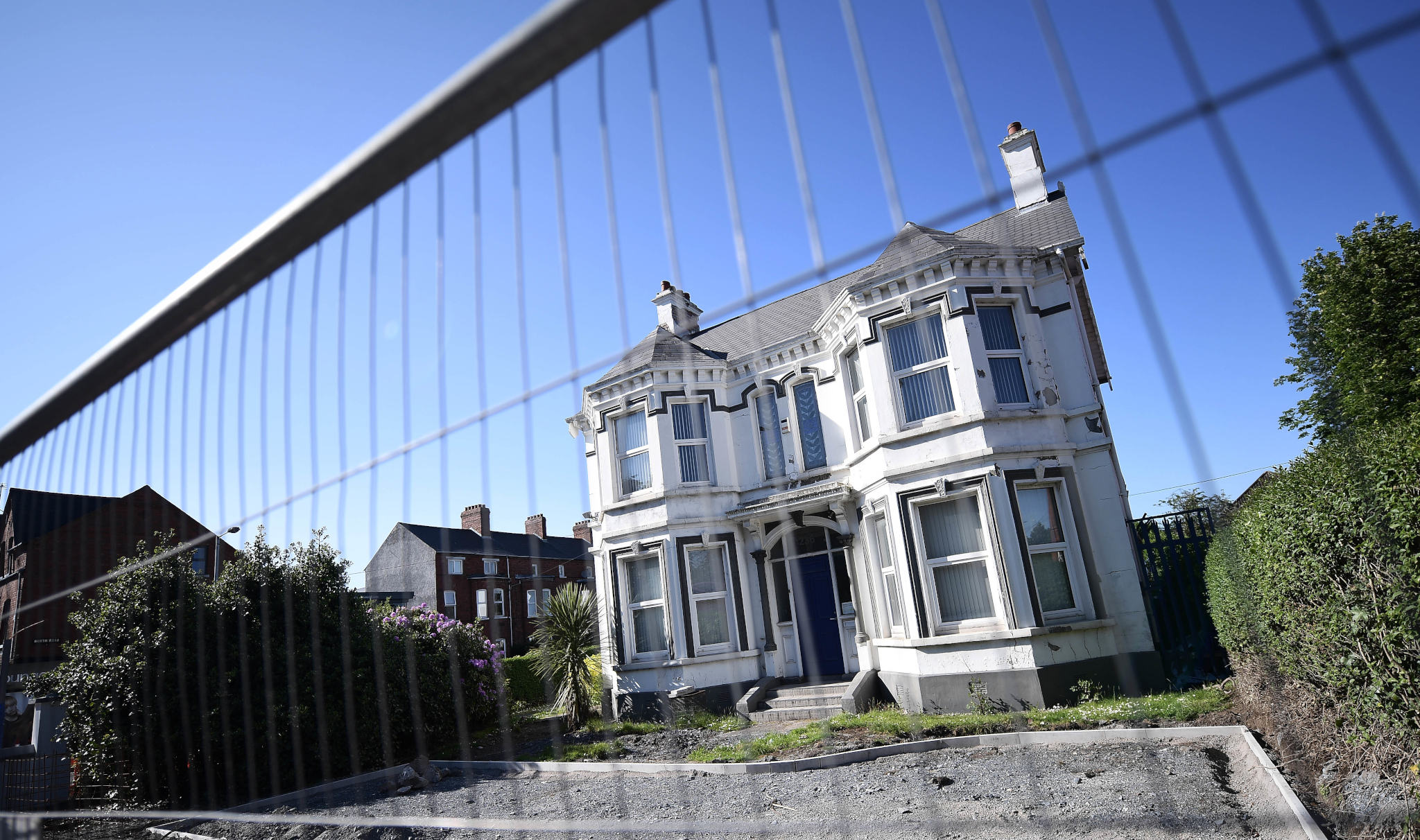The greatest challenge, the most important task, facing security and intelligence agencies should be to identify threats to the public from genuinely hostile forces, ranging from state agencies to violent individuals motivated by extreme ideologies.
Their biggest temptation is to use the special resources and laws – the privileges – at their disposal to amass as much information as possible on individuals, just in case, to play it safe.
That doesn’t make the country safe of course, quite the opposite. While they relax in the assumption they are covering every possible threat, the truly dangerous individual slips under the net.
British intelligence officers say the fight against ‘terrorism’ is getting increasingly difficult, comparing it to finding a needle in a haystack. The trouble is the agencies are building more and more haystacks.
The extent to which the Security Service, MI5, indulged in gathering information on individuals who never remotely posed a threat to Britain’s security is perfectly illustrated in Red List: MI5 and British Intellectuals in the Twentieth Century.
In a serious but at times most entertaining canter through the documents, the novelist, playwright, historian, academic and long-time scholar of the Left, David Caute picks more than 200, a fraction of the hundreds of thousands of the PFs (Personal Files) MI5 collected during the Cold War.
They are the more exotic targets revealed in papers that have been released at the National Archives in Kew, southwest London.
Phone tapping
Those whose phones were tapped and whose letters were opened by MI5 with the help of the police Special Branch had at one time or another expressed support for, or sympathy with, communism, and in rare cases joined the Communist Party of Great Britain, or who had friends who had done so – people who never remotely posed a threat to Britain’s security.
They included: the authors Arthur Ransome, JB Priestley, Kingsley Amis, Olivia Manning, Doris Lessing, and Christopher Isherwood; the poets WH Auden, Cecil Day-Lewis, and Stephen Spender; and historians Eric Hobsbawn, Christopher Hill and EP Thompson.
Also targeted by MI5 were the actor Michael Redgrave, the theatre producer Joan Littlewood, the composer Benjamin Britten and his partner Peter Pears, the Cambridge academic Maurice Dobb, the journalist Claud Cockburn, Lewis Bernstein, the founder of Granada TV, the popular scientist Jacob Bronowski, and Bruce Kent, a leading member of the Campaign for Nuclear Disarmament.
They also include a file on the Very Rev. Hewlett Johnston, dean of Canterbury Cathedral. Known as the Red Dean for proposing talks with the Soviet Union on disarmament, Johnston erected a large poster on the front of his Deanery proclaiming ‘Christians ban nuclear weapons’.
There was no exclamation mark. As a naive schoolboy in Canterbury I thought it was just highlighting the obvious.
‘Indians, Chinese and Negroes’
The MI5 files record in minute detail the movements and conversations of its targets.
It may not be surprising that MI5 officers were concerned about the potential influence of the historians Hobsbawn and Hill, and what Arthur Ransome, author of Swallows and Amazons, was now up to. He had first caught MI5’s attention as a correspondent for the Manchester Guardian in Moscow and married Leon Trotsky’s secretary, Evgenia Petrovna Shelepina.
British officials told MI5 that Ransome was an “exceedingly clever and interesting fellow – but an out and out Bolshevist”. The British consul and MI6 officer in Moscow, Robert Bruce Lockhart, soon corrected them. Ransome was on the contrary a valuable intelligence asset during the chaos of the Russian revolution.
“It is possible that the flat is being used for immoral purposes”
Many of the MI5 files are full of gossip and trivia with Special Branch watchers and phone tappers and MI5 officers possibly enjoying lascivious delight in reading the reports. In 1956, Special Branch informed MI5 that Doris Lessing, whom it described as “of plump build”, had moved into a flat in Warwick Road, London SW5.
“Her flat is frequently visited by persons of various nationality,” it reported, “including Americans, Indians, Chinese and Negroes.” The report added: “It is possible that the flat is being used for immoral purposes.”
600,000 files
MI5 files are released at random at the National Archives. While Whitehall weeders record what pages are being withheld, there is no way of knowing what files remain closed and when they will be released, if ever.
By the mid-1950s, MI5 had compiled some 600,000 PFs. PF1, I was told, is Eamon de Valera, the Irish nationalist leader, and Lenin is PF2.
Not all the individual files kept by Britain’s security and intelligence agencies were on those on the left who were regarded as subversives. Some, not considered by Caute’s book whose subject is MI5 targeting the left, were of appeasers and those sympathetic to Nazi Germany.
They include a file on Lord Rothermere, the first proprietor of the Daily Mail who sent a series of supportive and congratulatory telegrams to Nazi Germany’s leaders, including Hitler, just months before the outbreak of the second world war.
Unlike the US, there was no overt McCarthyism in Britain, no kangaroo court arraigning alleged security threats sympathetic to the Soviet Union. Blacklisting was more subtle and more secret, carried out with the help of the Post Office, the BBC – Caute has a chapter entitled ‘The BBC Toes the Line’ – and the British Council.
Journalists were encouraged to toe the line by the Foreign Office’s Information Research Department. What Caute mistakenly calls the Independent Research Department, the IRD was a shady agency providing journalists with propaganda, of varying degrees of subtlety, directed against Moscow and others around the world considered potentially hostile to Britain, including nationalist leaders in Africa.
1970s and 1980s
MI5 continued through the 1970s and 1980s – and beyond – to target a broad range of subjects, including the National Union of Miners, CND, and the National Council for Civil Liberties (now Liberty).
Files on these later MI5 operations have not been released at the National Archives and are therefore not covered by Caute. The extent of MI5’s ‘anti-subversive’ operations was revealed by the whistleblower, the former MI5 officer, Cathy Massiter.
“MI5 continued through the 1970s and 1980s – and beyond – to target a broad range of subjects”
The former MI5 officer, David Shayler, made further revelations about the agency’s files, including those on the former Labour cabinet ministers, Jack Straw and Peter Mandelson and on the Beatle, John Lennon.
MI5 explained on its website: “It has often been alleged that, in the past, we systematically investigated trade unions and various pressure groups. We have never investigated people simply because they were members of trade unions or campaigning organisations.”
It then provides its rationale, or excuse, by adding: “but subversive groups have in the past sought to infiltrate … such organisations as a way of exerting political influence”.

Lesson from the past
Successive heads of MI5 have acknowledged that by sweeping up so many individuals considered ‘subversive’, the agency was slow to recognise serious security threats including those from paramilitary groups in Northern Ireland and, later, from Islamist extremists.
More recent terrorist attacks in Britain (and in the West as a whole) have been perpetrated by individuals already identified as potential security threats, as parliament’s Security and Intelligence Committee and Declassified have reported.
After the 7/7 attacks in London in 2005, when it was revealed that two of the bombers had appeared on its radar, MI5 said it was prevented from tracking all of those involved because of a lack of resources.
This is the continuing and pertinent relevance of the Red List. The lesson from the past is that amassing information can blind those responsible from genuine threats to genuine national security. Yet it seems that lesson has not been learned. Now, state agencies are encouraged through the Prevent project to stop people “from being drawn into terrorism”.
The temptation to manufacture fear and indulge in moral panic sweeps up individuals who present no threat at all to national security, as when those such as the Green MP, Caroline Lucas, is labelled by the police as a ‘domestic extremist’ for her campaigning activities.
Developments in powerful computers and surveillance technologies will make it easier and easier for security and intelligence agencies to amass more and more personal information. Their record, as Caute so clearly demonstrates, does not augur well.
Red List: MI5 and British Intellectuals in the Twentieth Century is published by Verso (£20).




